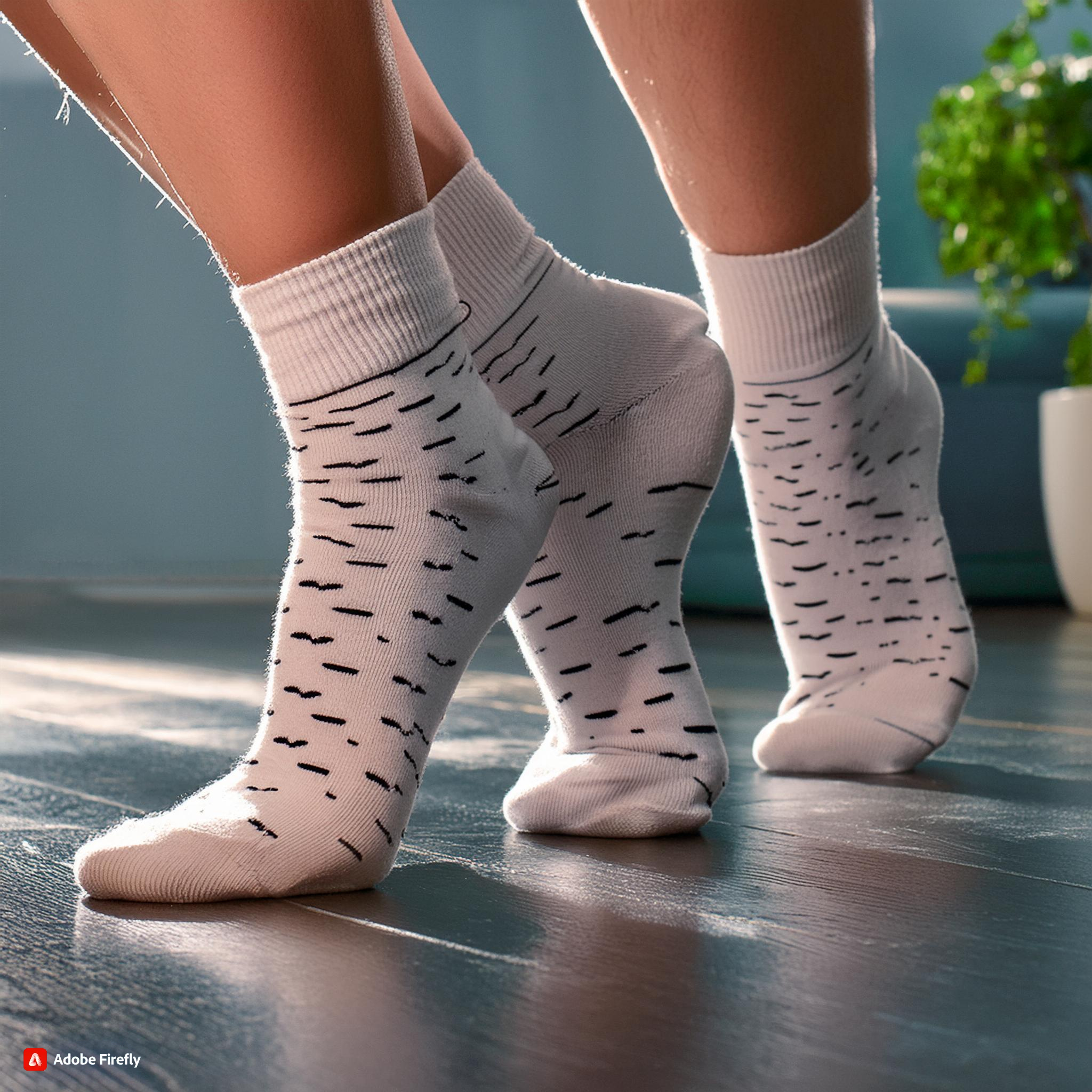Peripheral neuropathy is a condition that affects the peripheral nerves, often leading to pain, numbness, and weakness, primarily in the hands and feet. Managing this condition can be challenging, but choosing the right socks can provide significant relief and improve daily comfort. In this comprehensive guide, we will explore the best socks for peripheral neuropathy, their benefits, and provide product recommendations to help you find the perfect pair.
Understanding Peripheral Neuropathy
Peripheral neuropathy can result from various causes, including diabetes, chemotherapy, infections, and other health conditions. Symptoms often include tingling, burning sensations, and sharp pain, particularly in the feet and lower legs. Proper foot care, including the use of specialized socks, is crucial for managing these symptoms and enhancing comfort.
What are the features of the SHBC EVA Oxford Insulin Pen Carrying Case
Key Features of Socks for Peripheral Neuropathy
When selecting socks for peripheral neuropathy, consider the following features:
1. Cushioning and Padding
Socks with extra cushioning provide additional comfort and protect sensitive feet from friction and pressure. This helps reduce pain and discomfort associated with peripheral neuropathy.
2. Seamless Design
Seamless socks prevent irritation and reduce the risk of blisters. This design is essential for individuals with peripheral neuropathy who may have heightened sensitivity in their feet.
3. Moisture-Wicking Materials
Socks made from moisture-wicking materials keep feet dry and prevent fungal infections. Dry feet are less likely to develop sores and blisters, which is crucial for neuropathy patients.
4. Non-Binding Top
A non-binding top ensures that the socks do not constrict circulation, which is important for individuals with neuropathy and those with conditions like diabetes.
5. Compression
Some socks offer mild compression to improve blood circulation and reduce swelling. This can be beneficial for neuropathy sufferers who experience edema or poor circulation.
Best Socks for Peripheral Neuropathy: Product Recommendations
1. Physician’s Choice Diabetic Crew Socks
Key Features:
- Seamless toe to reduce friction
- Moisture-wicking fabric to keep feet dry
- Extra cushioning for added comfort
- Non-binding top to enhance circulation
These socks are specifically designed for diabetic patients but are also highly suitable for individuals with peripheral neuropathy. The seamless design and extra cushioning provide maximum comfort, while the moisture-wicking fabric ensures dry and healthy feet.
2. Orthofeet BioSoft Diabetic Socks
Key Features:
- Non-binding, stretchy top for better circulation
- Seam-free interior to minimize irritation
- Soft, moisture-wicking yarns
- Cushioned sole for enhanced comfort
Orthofeet BioSoft Diabetic Socks are made from soft, moisture-wicking yarns and feature a seamless interior. These socks are designed to offer relief from pressure points and reduce the risk of blisters, making them an excellent choice for neuropathy sufferers.
3. Dr. Scholl’s Advanced Relief Blister Guard Socks
Key Features:
- Blister guard system to prevent blisters
- Moisture management technology
- Padded for comfort
- Seamless toe for reduced irritation
Dr. Scholl’s Advanced Relief Blister Guard Socks are engineered to prevent blisters and keep feet comfortable. The moisture management technology and padded design make these socks ideal for individuals with peripheral neuropathy.
4. Facool Circulatory Diabetic Socks
Key Features:
- Loose fit top to improve blood flow
- Seamless toe to avoid pressure points
- Thick, soft fabric for warmth and comfort
- Moisture-wicking properties
Facool Circulatory Diabetic Socks are designed to enhance blood circulation and provide maximum comfort. The loose fit top and seamless toe make them perfect for those with neuropathy, offering both support and relief.
5. SB SOX Compression Socks
Key Features:
- Graduated compression to improve circulation
- Moisture-wicking and anti-odor fabric
- Seamless toe for comfort
- Breathable and durable material
SB SOX Compression Socks provide graduated compression to improve circulation and reduce swelling. The moisture-wicking fabric and seamless toe make them comfortable for all-day wear, which is beneficial for individuals with peripheral neuropathy.
Tips for Managing Peripheral Neuropathy
While wearing the right socks can significantly improve comfort, it’s important to follow additional tips for managing peripheral neuropathy:
1. Regular Foot Inspections
Check your feet daily for cuts, blisters, or any signs of infection. Peripheral neuropathy can reduce sensation in your feet, making it difficult to notice injuries.
2. Maintain Blood Sugar Levels
If your neuropathy is due to diabetes, keeping your blood sugar levels under control is crucial. Follow your healthcare provider’s advice regarding diet, medication, and exercise.
3. Exercise Regularly
Engage in low-impact exercises such as walking, swimming, or yoga to improve circulation and overall health. Regular physical activity can help manage neuropathy symptoms.
4. Stay Hydrated
Drinking plenty of water is essential for overall health and can help prevent dryness and cracking of the skin on your feet.
5. Avoid Smoking
Smoking can worsen neuropathy by reducing blood flow to your extremities. If you smoke, seek help to quit.
6. Use Foot Creams
Apply moisturizing creams or lotions to your feet daily to keep the skin soft and prevent cracking. Look for products specifically designed for diabetic or sensitive skin.
Frequently Asked Questions (FAQs)
1. What are the best socks for peripheral neuropathy?
The best socks for peripheral neuropathy include Physician’s Choice Diabetic Crew Socks, Orthofeet BioSoft Diabetic Socks, Dr. Scholl’s Advanced Relief Blister Guard Socks, Facool Circulatory Diabetic Socks, and SB SOX Compression Socks. These socks offer features like seamless design, extra cushioning, and moisture-wicking materials to provide comfort and support.
2. Why is a seamless design important in socks for neuropathy?
A seamless design is important because it prevents irritation and reduces the risk of blisters, which is crucial for individuals with peripheral neuropathy who have sensitive feet.
3. How do moisture-wicking materials benefit those with peripheral neuropathy?
Moisture-wicking materials help keep feet dry by drawing sweat away from the skin. This reduces the risk of fungal infections and keeps the feet comfortable, which is especially important for people with peripheral neuropathy.
4. Can compression socks help with peripheral neuropathy?
Yes, compression socks can help improve blood circulation and reduce swelling, which can be beneficial for individuals with peripheral neuropathy. However, it’s important to choose compression socks with mild compression and consult with a healthcare provider before use.
5. How often should I replace my socks?
Replace your socks as soon as they show signs of wear and tear, such as thinning fabric, holes, or loss of elasticity. For optimal support and hygiene, it’s a good idea to replace them every 3-6 months.
6. Are there any additional tips for choosing socks for peripheral neuropathy?
Look for socks with extra cushioning, a non-binding top, and a seamless design. Also, consider socks made from breathable, moisture-wicking materials to keep your feet dry and comfortable.
Conclusion
Choosing the right socks can make a significant difference in managing the symptoms of peripheral neuropathy. By selecting socks with features like extra cushioning, seamless design, and moisture-wicking materials, you can enhance your comfort and protect your feet from further complications.













